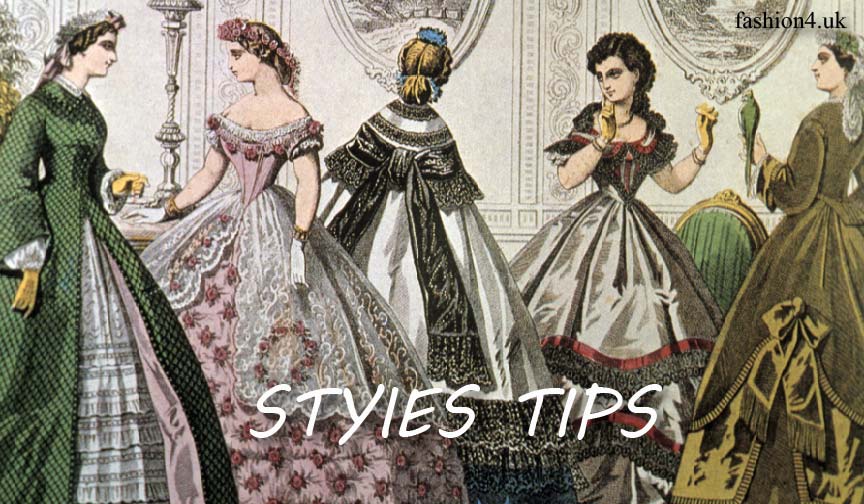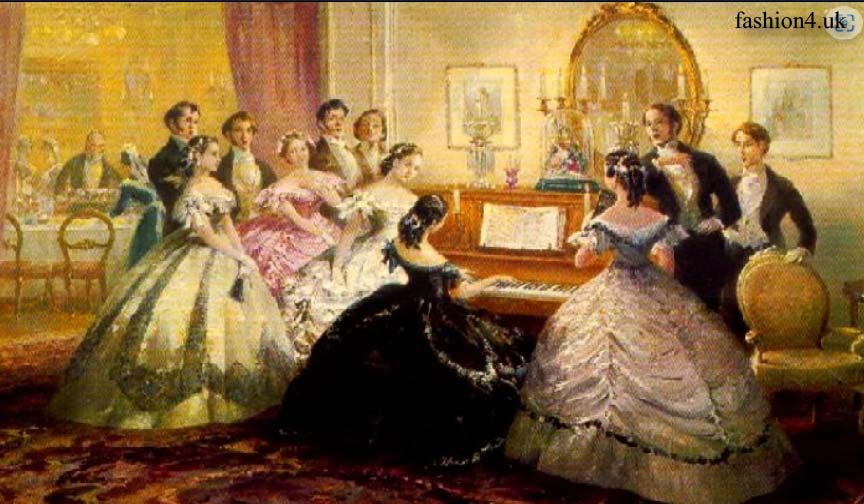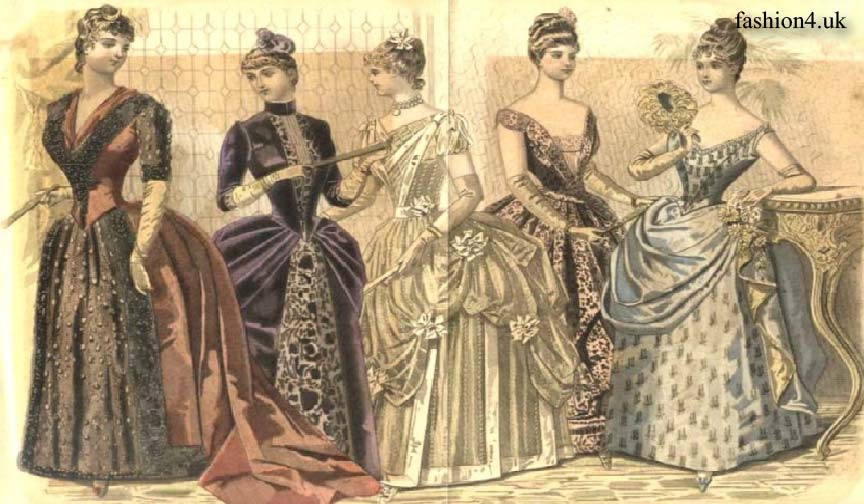
Victorian fashion is a fascinating window into the past, revealing the nineteenth century’s complicated social norms, artistic moves, and technological improvements. As you walk through this era’s style, you’ll discover that clothing wasn’t pretty much style—it turned into a language of its personal. But what precisely defined Victorian style, and why does it continue to captivate us nowadays?
Introduction to Victorian Fashion
Victorian style, spanning from 1837 to 1901 at some stage in Queen Victoria’s reign, was characterized by intricate designs, tricky detailing, and an emphasis on modesty. The era witnessed dramatic adjustments in fashion, reflecting the social and cultural shifts of the time. However, more than only a mirrored image of the era’s aesthetics, the Victorian style became a compelling symbol of popularity, morality, and identity.
The Historical Context
To honestly appreciate Victorian fashion, we must first understand the ancient backdrop. The Victorian generation changed into a time of great exchange in Britain—marked by industrialization, the expansion of the British Empire, and strict social hierarchies. Fashion during this era has become now not just a personal desire but a societal expectation. It became a way to communicate one’s magnificence, wealth, and values without uttering an unmarried word.
Victorian Fashion for Women
Women’s fashion within the Victorian era became defined by its luxury and modesty. The silhouette becomes paramount, with corsets cinching the waist and creating an hourglass determine. Dresses had been voluminous, with layers of petticoats and crinolines including to the grandeur. Over the years, the silhouette advanced, from the bell-fashioned skirts of the early Victorian period to the greater streamlined bustle skirts of the past due 19th century.
Key Elements:
- Corsets: Essential for achieving the desired silhouette.
- Bustles: Added shape to the return of the get-dressed, growing an excellent shape.
- Sleeves: Ranged from tight and fitted to huge and puffed, relying on the last decade.
Victorian Fashion for Men
Even though less problematic than girls’, men’s style became equally reflective of the generation’s values. The Victorian gentleman was anticipated to dress with dignity and discretion. Tailcoats, waistcoats, and trousers have been the staples of men’s fashion, emphasizing sharp tailoring and muted colors. The bowler and top hats became iconic accessories, symbolizing respectability and standing.
Key Elements:
- Tailcoats: Worn for formal events, with a fitted waist and lengthy tails.
- Waistcoats: Provided a layered appearance and added a dash of color or pattern.
- Accessories: Pocket watches and canes were famous among the higher elegance.
Children’s Clothing
Children’s fashion in Victorian technology changed into a miniature model of adult style, even though with extra consolation and practicality. Boys frequently wore sailor fits, a fashion popularized by Queen Victoria’s sons, while women wore attire with high necklines and complete skirts. As kids grew older, their clothing progressively transitioned to resemble grown-up attire.

The Influence of Queen Victoria
Queen Victoria herself had a significant influence on the style of the time. Her desire for modest, conservative apparel set the tone for ladies’ fashion throughout Britain and even the broader international. The queen’s mourning apparel, following Prince Albert’s death, popularized the trend of wearing black for mourning, which has become a widespread practice.
The Role of Fabrics and Materials
Victorian style was also described by the selection of fabrics and materials. The rich desired luxurious textiles such as silk, velvet, and satin, while the working class typically wore less complicated materials like cotton and wool. Lace, ribbons, and embroidery were usually used to decorate clothes, adding to the general extravagance of the era.
Popular Accessories
No Victorian outfit was entirely changed without the proper add-ons. For ladies, these supposed gloves, bonnets, and parasols added a touch of elegance to their attire. Jewelry also became a critical part of a woman’s clothing cabinet, with cameos, brooches, and pearls being particularly famous. Men were accessorized with pocket watches, cravats, and strolling sticks; every item symbolized their status.
The Evolution of Silhouettes
The Victorian era saw an incredible evolution in style silhouettes. The early Victorian period was ruled by extensive skirts supported by crinolines, which grew a bell-like shape. By the 1870s, the bustle had become the focus, moving the quantity to the back of the get-dressed. The silhouette continued to alternate into the late Victorian period, with narrower skirts and an extra elongated, hourglass figure turning into famous.
Colors and Patterns
Color played a critical role in Victorian style, with wealthy, deep colors like burgundy, navy, and emerald being favored. The invention of artificial dyes in the mid-19th century extended the color palette available, making vibrant sunglasses more accessible. Patterns such as florals, plaids, and stripes were also popular and frequently used to add visual interest to otherwise simple garments.

Victorian Fashion and Social Class
Fashion in Victorian society has become a clear indicator of social magnificence. The wealthy displayed their status through tricky clothing, high-priced fabric, and tricky details. In contrast, the working magnificence wore more excellent, practical, long-lasting garb ideal for their daily hard work. This distinction in apparel bolstered the inflexible social hierarchies of the time, making fashion a crucial tool for keeping magnificence differences.
Impact of the Industrial Revolution
The Industrial Revolution had a profound impact on Victorian fashion. Advances in textile manufacturing made the fabric lower priced and handy, permitting a wider variety of human beings to take part in style traits. The rise of branch shops and the availability of equipped-made clothing also revolutionized how humans shopped for garments, making fashion more democratic than ever earlier.
Legacy of Victorian Fashion
The impact of Victorian fashion extends a ways past the 19th century. Its emphasis on modesty, shape, and elements has inspired limitless fashion moves and remains a source of fascination for designers and fashion enthusiasts alike. The iconic silhouettes and tricky designs of the Victorian generation are often referenced in current fashion, proving that this period’s style is undoubtedly timeless.
Victorian Fashion in Modern Times
Today, the Victorian style is regularly seen in period movies, gothic subcultures, or even excessive-style runways. The technology’s distinct factors, together with corsets, lace, and complicated robes, continue to captivate and inspire. Whether through a vintage-stimulated get-dressed or an assertion piece of jewelry, the spirit of Victorian fashion lives on in modern instances, reminding us of a generation wherein garb became a whole lot more than simply material.
Conclusion
Victorian fashion became a complicated and wealthy tapestry woven from the threads of history, subculture, and social norms. It became a period where apparel told a tale, meditated one’s fame, or even dictated conduct. While the style of the Victorian generation can also appear distant, its effect remains felt these days, reminding the country of time while fashion became an artwork shape that spoke volumes without saying a word.
__________________________________________________________________________________________________________________
FAQs
1. What defined Victorian style for girls?
Victorian women’s fashion was defined by corsets, voluminous skirts, and an emphasis on modesty and beauty. The silhouette became valuable, evolving from bell-formed skirts to extra streamlined designs over the century.
2. How did men’s fashion differ from ladies’s at some point in the Victorian era?
Men’s fashion became more limited and focused on sharp tailoring, with clothes like tailcoats and waistcoats. Unlike girls’ fashion, which became difficult, guys’ garb emphasized dignity and standing through simplicity and elegance.
Three. What function did social magnificence play in Victorian fashion?
Social class was a tremendous issue in Victorian style, with the wealthy wearing highly-priced, elaborate apparel and the running elegance opting for sensible, durable attire. Fashion served as a clear indicator of one’s social standing.
4. How did the Industrial Revolution affect the Victorian style?
The Industrial Revolution made fabric extra low-priced and handy, permitting more people to participate in style traits. It also added geared-up-made garb and branch shops, democratizing style.
Five. Why is Victorian fashion nevertheless applicable these days?
Victorian fashion inspires present-day designers and style enthusiasts with its timeless elegance, attention to elements, and iconic silhouettes. Its impact is visible in diverse aspects of contemporary fashion, from vintage styles to gothic subcultures.

